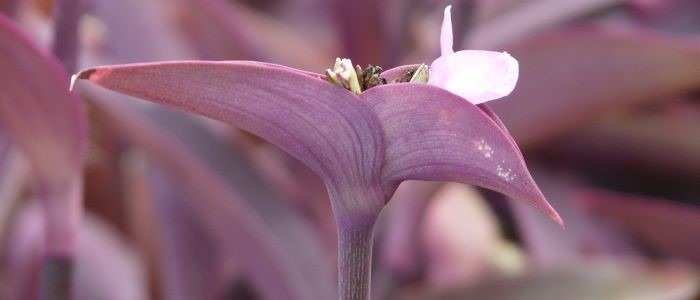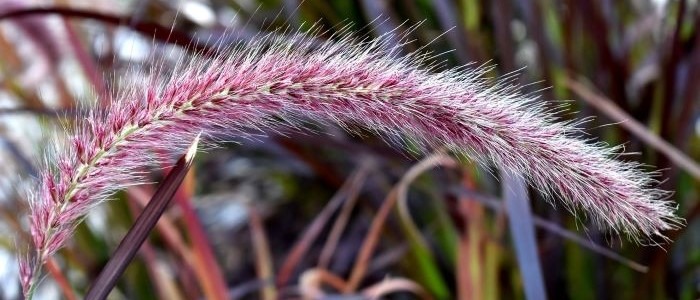When it comes to choosing the right purple verbena plant for your garden, there are a few considerations to take into account. The size of the space you want to fill is an important factor in selecting a variety of purple verbena. Make sure that you choose a plant that is large enough to fill the area without overpowering it or taking up too much space. Additionally, make sure that you select a variety of purple verbena that can survive in your climate and will flourish in the particular area you plan to put it.
It is also important to evaluate the growing zone requirements for purple verbena plants before making a purchase. Each variety of purple verbena has different needs in terms of temperature, sun exposure, and soil type. Be sure to research how these requirements match up with your local climate so that you can choose a variety that will do well in your location.
When purchasing a purple verbena plant, be sure to look for signs of disease or damage such as wilting leaves, discoloration, or moldy spots on the stems or leaves. This could indicate an unhealthy specimen which won’t do well in your garden even if its other requirements are met. Finally, check the roots of the plant and make sure they are healthy and intact as this is essential for proper growth and development over time.
By following these steps when selecting a purple verbena plant, you can ensure that you find one that will be suitable for your climate and will thrive with minimal care over time. With just some basic knowledge and planning beforehand, not only will this help ensure success with your new addition but also reduce any hassle down the line!

Purple Verbena Plant Frequently Asked Questions
Can verbena be grown in containers?
Yes, verbena can be grown in containers. In fact, it thrives in pots and hanging baskets, making it a popular choice for gardeners with limited space. Container-grown verbena requires well-draining soil and regular watering to ensure its vibrant blooms continue throughout the growing season. With proper care, verbena can add a burst of color to any patio or balcony.
Is verbena a fast-growing plant?
Yes, It is known for its rapid growth rate and ability to quickly fill garden spaces or containers. With proper care and favorable conditions, your verbena plant can easily establish itself and produce an abundance of vibrant colorful blooms throughout the growing season.
Ideal Growing Conditions for Purple Verbena Plant
Purple Verbena plants are native to warm climates, so they will thrive in areas with temperatures between 60-85°F (15-29°C). They need full sun for at least six hours a day, and can also tolerate partial shade if necessary. These plants prefer a soil that is well-drained and rich in organic matter. If the soil is too sandy or clayey, you may need to amend it with compost or other organic material.
When it comes to watering, purple Verbena plants should be kept consistently moist but not soggy. To retain moisture longer, add a layer of mulch on top of the soil around the plant; this will help to keep the soil cool and moist. Additionally, fertilizing once every two weeks during the growing season is recommended for optimal growth and flowering.
Overall, purple Verbena plants require little maintenance but do need consistent care to ensure that they stay healthy and vibrant throughout the year. With regular attention and proper water and fertilizer levels, these beautiful plants can make an attractive addition to any garden setting.
Watering Requirements for Purple Verbena Plants
Watering and feeding requirements for purple verbena plants are essential for their health and growth. To ensure that they get the right amount of water, it is important to check the soil moisture levels before watering. When the top inch of soil is dry, it’s time to water. Water deeply, allowing the water to penetrate to the root zone. Be sure not to overwater, as this can lead to root rot or other diseases.
Fertilizing should be done on a monthly basis with a balanced fertilizer. Avoid over-fertilizing, as this can burn the roots and cause damage to your plant. Additionally, apply liquid fertilizer formulated for blooming plants every few weeks during the growing season for optimal growth and flowering. To ensure that your purple verbena plant gets enough nutrition throughout its life cycle, fertilize consistently throughout spring and summer when they are at their peak growth period.
You should also make sure that your purple verbena plants are planted in well-draining soil and never soggy or wet soils. Mulch can also help retain moisture in dryer climates and assist with weed control. By following these simple guidelines you will be able to provide your purple verbena plants with all of the nutrients they need for proper growth and flowering!
How to Propagate Purple Verbena Plants
Propagating purple Verbena plants is an easy and rewarding process. With a few simple methods, you can increase your stock of these beautiful plants without having to purchase new ones.
The most popular way to propagate Verbena plants is through stem cuttings. To do this, select healthy stems and remove the lower leaves before placing them in moist potting soil. Make sure the potting soil drains well and place the potted cuttings in a spot that receives indirect sunlight. The stems should root within two to three weeks, at which point they can be transplanted into your garden or pots.
Division is another method of propagation for established Verbena plants. To do this, carefully dig up the established plant and divide it into multiple parts with each part containing a healthy root system. Replant each divided section in separate areas of your garden or pot them separately for indoor use.
Layering is a third method that can be used to propagate purple Verbena plants. This involves selecting a healthy stem, bending it down to the ground and securing it with a rock or wire to keep it in place until new roots form around the node where it was secured. Once done, you can then transplant this layer into its own pot or area of your garden bed.
No matter which method you choose for propagating purple Verbena plants, make sure that you provide them with adequate sunlight and water once planted so they can thrive in their new environment!
Pruning and Deadheading Purple Verbena Plants
Pruning and deadheading purple verbena plants is essential for keeping them healthy and blooming. Pruning helps maintain the desired shape of the plant, encourages new growth, and ensures that the plant has enough sunlight and air circulation. Deadheading removes spent flowers to encourage more blooms and keep the plant looking tidy.
The best time to prune and deadhead purple verbena plants is in late spring or early summer, after flowering has finished. When pruning, use sharp gardening shears or scissors to make clean cuts just above a set of leaves on each stem. Be careful not to cut too much from any one stem as this could damage the plant significantly. Prune lightly throughout the year if needed, but avoid heavy pruning as this could slow down growth.
When it comes to deadheading, simply remove any dead or diseased flower heads as they appear. This will help keep your purple verbena plants free from disease and ensure that they have plenty of room for new growth and blooms. You can also pinch off any stems with weak or sparse foliage in order to encourage healthier growth throughout the season.
With proper pruning and deadheading techniques, your purple verbena plants can stay healthy all season long! By taking care of these simple tasks regularly during their growing period, you can ensure that your purple Verbena plants remain beautiful additions to any garden for years to come.
Common Pests and Diseases of Purple Verbena Plant
Pests and diseases can be a major problem when it comes to purple verbena plants. Common pests include aphids, mealybugs, spider mites, and whiteflies. These can cause yellowing of the foliage, stunted growth, or wilting of the plant. To help prevent an infestation, organic insecticides can be used as a preventive measure. It is also important to keep the garden clean and free from debris as this provides shelter for pests.
Root rot, powdery mildew, and foliar blight are some of the most common diseases for purple Verbena plants. Root rot is caused by overwatering or poor drainage in soil and appears as wilting or yellow leaves on the plant. Powdery mildew is identified by its white-gray powdery patches on foliage while foliar blight will cause brown spots that eventually turn into lesions on stems and leaves. Good air circulation between plants is key in preventing these diseases from spreading among your purple verbena plants; proper spacing of plants helps with this.
To prevent disease from occurring in the first place, make sure to avoid wetting the foliage when watering and keep an eye out for any signs of disease such as yellowing or wilting leaves. If any symptoms appear on your purple verbena plant be sure to remove them immediately before they spread further throughout your garden. Additionally, you may want to consider using organic fungicides if you notice signs of disease appearing on multiple plants in your garden.
Overall, with proper care and maintenance purple verbena plants can flourish in gardens all over the world with minimal pest or disease issues arising along the way!
Conclusion
In conclusion, purple Verbena plants can be a beautiful addition to any garden with the right care and attention. They need full sun for at least six hours a day, as well as well-drained soil and regular fertilizing. Watering should be consistent and fertilizing should be done once every two weeks during the growing season for optimal growth and flowering. Additionally, it is important to prune and deadhead regularly in order to encourage healthy growth throughout the season.
Lastly, make sure to check for common pests and diseases that may affect your plant’s health, such as aphids, mealybugs, spider mites, whiteflies, root rot, powdery mildew, or foliar blight. By following these steps you will be able to select your purple verbena plant and caring for them correctly.













